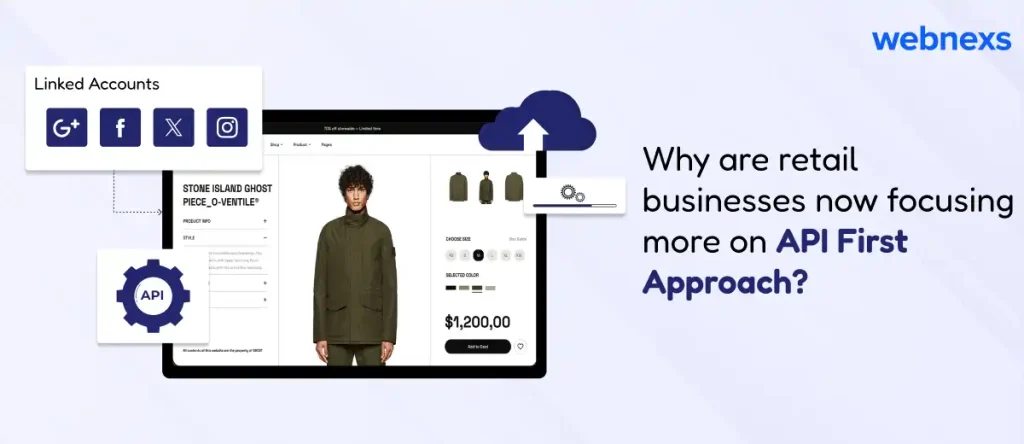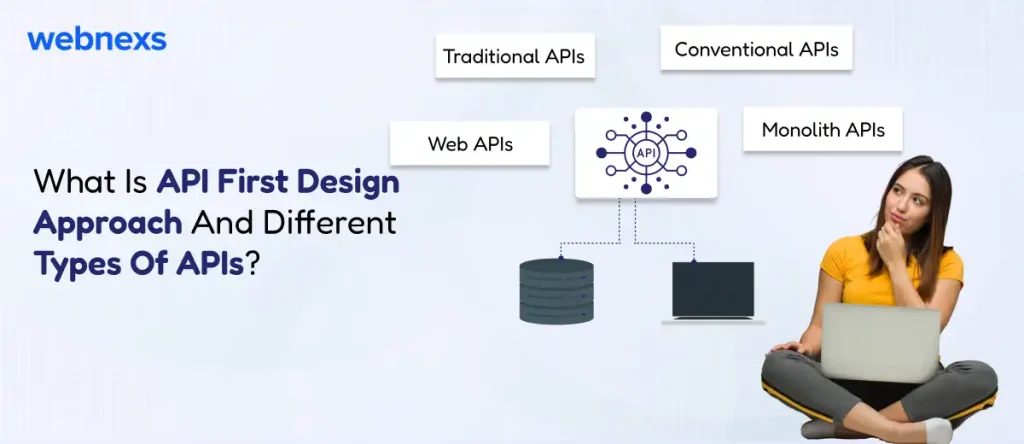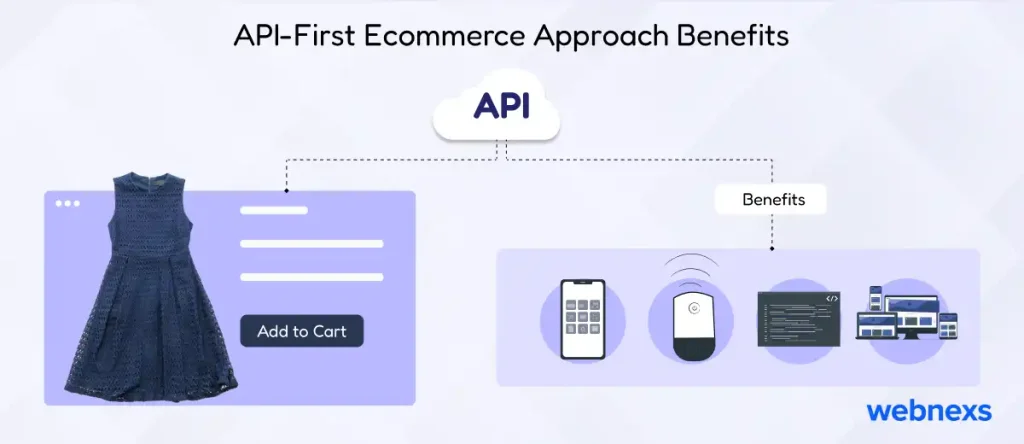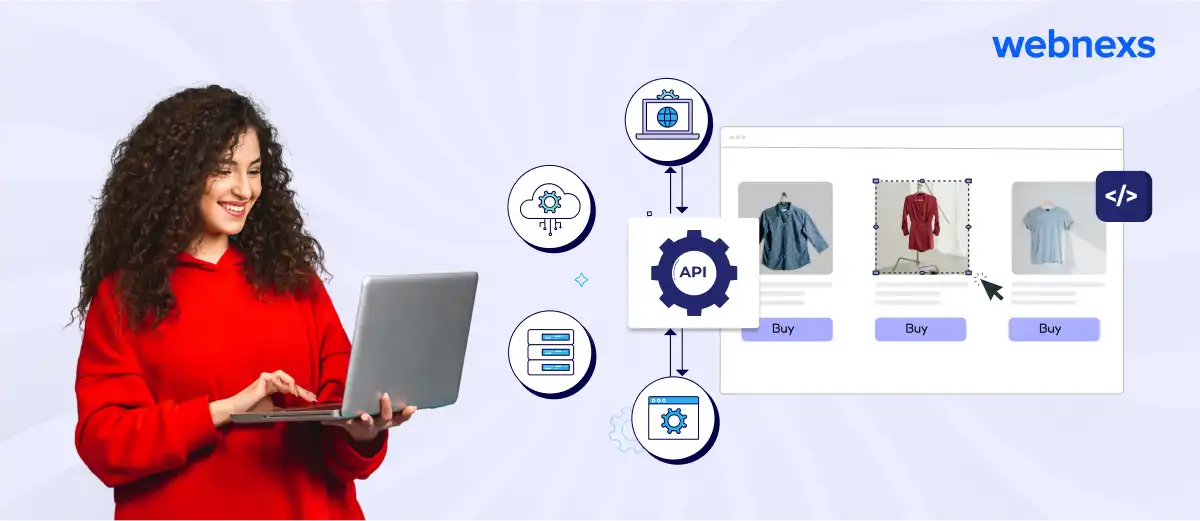Are you ready to revolutionize your ecommerce design and development process? In our latest article, we explore the significance, types, and benefits of APIs and the API First Approach. Whether you’re a seasoned developer or a business owner diving into the digital realm, understanding these concepts is crucial for success. Join us as we delve into the world of APIs, uncovering their role in modern ecommerce and how adopting an API First Approach can streamline your design and development workflow.
You may have heard people saying that application programming interfaces (APIs) are a new-age concept, but it’s a thing that has been prevailing for the last decade.
But the fact is, it has been emerging vigorously in recent years as the concept of “API-first.” Every single system in the current digital era relies on APIs. The whole ecosystem is powered by APIs. Many businesses sit back relaxed, thinking they’re leveraging APIs in their API first companies. But all they miss out on is the API-first e-commerce approach because it’s a real case one should consider.
Why are retail businesses now focusing more on API First Approach?

This API first strategy enables one system to gain access to another in order to extend functionality to the necessary extent. In modern commerce, such communication between applications is the cornerstone. Linked accounts within the system and in other apps. These API integrations allow users to share data securely with one another. Also, the APIs enable retail businesses to add new functionalities and features to the existing system without developing the platform from scratch.
As a matter of fact, many businesses are moving around the retail realm, but that doesn’t mean they use up the “API first approach.”
An API in the API-first is a robust tool that plays a vital role in the digital era as an effective integration tool between the applications of the system. These tools are now re-shaping the entire online retail segment as they help businesses develop and deploy ultimate APIs with many tangible benefits.
In this blog, let’s learn what API-first means in the online retail platform and ensure that numerous e-commerce businesses are missing out on the benefits of APIs while thinking they are using the “API first approach”.

What Is API First Design Approach And Different Types Of APIs?

As we said before, APIs are not a new technology to learn about, so they don’t need any introduction. These APIs have started to bridge the gap between two different applications and have been integrating disparate systems for the past few years.
These APIs were added to the conventional systems, but were not intended to be used in a primary way to use the applications. These APIs in software monoliths were built with all of the necessary business and application logic, but they only had access to a small subset of the reasons. These limitations are the poor outcome of these monolith APIs.
But the modern APIs are quite different, and many refer to them as “Web APIs”; they work exactly the opposite to monolithic APIs. Instead of allowing access to the full application capability and providing developers the ability to build a loosely coupled system, These Web APIs allow developers to take control over the development process and integrate new services. But the traditional APIs are not that flexible and designed with many limitations. So, unlike conventional APIs, the modern web APIs, on the other hand, are more flexible and go seamlessly with different systems.
These modern web APIs offer modern retail businesses the ability to scale and evolve with ongoing consumer demand.
Read More: What is Headless Ecommerce and its Core Benefits?
What’s the difference between APIs and API-first development in Ecommerce?

As their names imply, both seem to be the same, but their potential and work are entirely different. Starting with the API, it’s no surprise that businesses are using and deploying it for their operations. But in the past, we have seen many technologies coming and finding their way home, but only a few stay here and mark their presence. Even a few have become a vital part of the modern digital ecosystem. That’s certainly the case with APIs.
In most forums, blogs, and technology communities, you’ve heard techies discussing APIs and pulling out their viewpoints. Let’s not do that here. Let’s discuss more API-first and what it has to offer your retail business.
API-First Ecommerce Approach Benefits

An API-first approach deliberately pushes the APIs ahead of implementation to bring better outcomes in developing and deploying new functionalities and services. APIs make the whole development process a lot more manageable by “patching up” the new service and software with APIs instead of developing a particular piece of software. Instead of creating slow and poorly interconnected monoliths, Web APIs or API-first approaches enable businesses to focus on developing a dynamic and genuinely flexible solution that grows and scales with their retail business.
This approach will allow your retail business to develop a new platform in parallel for different applications at the service layer. That means your retail company can use it to seamlessly integrate other front-ends at the same time, such as mobile apps, voice-recognized smart speakers, and even device-optimized websites.
Read More: Traditional Vs. Headless Commerce: Who Wins The Battle?
APIs and API-First E-commerce Conclusion
All set, these Web APIs are open-ended, and a flexible API first approach will accelerate the time-to-market and give your retail business more options to reach the market.
We live in an age where the eCommerce segment is making serious waves; adopting an API first approach to development will ensure your business agility to stay more relevant in the market and help to shape it.
Find out how you could be a part of modern APIs with the industry’s best experts today.

APIs and API First Approach FAQs
1. What is the API-first approach strategy?
The API-first approach strategy involves designing and developing APIs as the primary foundation of a project before implementing any user interface. It prioritizes the creation of robust and versatile APIs that can seamlessly integrate with various systems and platforms.
2. What are the benefits of API-first approach?
The benefits of the API-first approach are manifold. It fosters better collaboration among development teams, accelerates the development process, promotes scalability and flexibility, facilitates integration with third-party services, ensures consistency across multiple platforms, and enhances security by enforcing access controls at the API level.
3. What is the API approach?
The API approach refers to the method of designing and building applications by focusing on the creation and utilization of APIs. APIs act as intermediaries that enable different software systems to communicate and interact with each other, facilitating data exchange and functionality integration.
4. What is the code-first approach in API?
The code-first approach in API development involves writing the implementation code first and then generating the corresponding API specification based on the code. While this approach may offer more flexibility in coding, it can lead to inconsistencies between the code and the API documentation.
5. What is API in e-commerce?
In e-commerce, an API serves as a bridge that allows different software applications and systems to communicate and share data with each other. APIs play a crucial role in enabling functionalities such as product catalog management, payment processing, order fulfillment, and integration with third-party services in e-commerce platforms.




